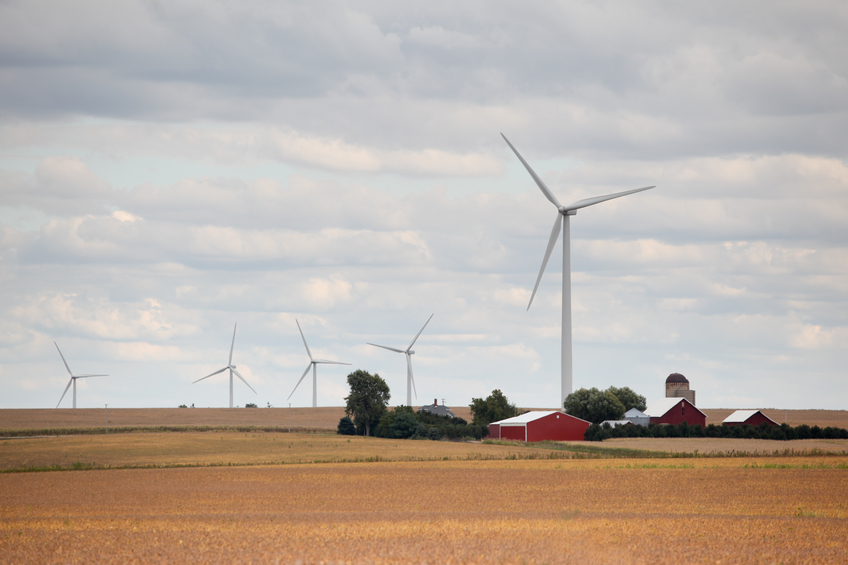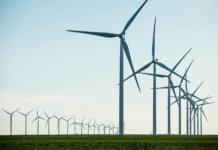The date on which the first profitable power flows from a new wind farm has a special place on construction schedules. It marks the end of a long sequence in which hundreds of shipments of complex mechanical and electrical equipment should be mounted, wired and ready to run.
How does a company track such an enormous effort? ‘A detailed critical path method schedule is essential,’ says Jerry Grundtner, vice president of project development at Mortenson Construction.
{OPENADS=zone=33}
Mortenson schedules several hundred wind-farm activities on such a chart, along with a clearly plotted critical path. ‘It tracks things that must happen before tackling other tasks,’ Grundtner explains. ‘Wind-turbine deliveries are on the chart, along with the main power transformer and substation equipment.’
Critical-path equipment often has an arrival window of less than a week. ‘Should a major piece of equipment – such as a main power transformer for the substation – arrive late, it has a significant negative impact on the project’s completion,’ says Grundtner. ‘If five of 100 turbines are late, it’s not a big problem. But there is only one main power transformer, and its late arrival negatively impacts the overall schedule.’
To keep equipment on schedule, the company assigns engineers to mentor and coordinate the delivery of all major materials.
‘An individual may have responsibility for coordinating delivery of the wind turbine, another for electrical components, and so forth,’ Grundtner adds. ‘Those individuals use the master schedule to know when we need the equipment, so they stay in communication with its manufacturer, confirming the delivery dates. Occasionally, we’ll send a representative to the factory to verify construction progress on critical equipment.’
For another perspective on prompt delivery, look at the substation. Prompt delivery is critical, because just about everything there is customized.
‘Once you determine the size of the wind farm and the utility transmission voltage, you can select its equipment,’ says Melvin Brown, manager of business development for renewables at ABB. ‘Developers often start a project only after they have the power purchase agreement (PPA) and environmental permits in place.’
‘The PPA (or interconnect service agreement) is critical because it sets the date on which the wind farm is to first deliver power to the grid,’ says Brown. ‘That date is set in stone. Worse still, if the developer misses the PPA dates, the owner says ‘goodbye’ to Treasury grants and production tax credits.’
Even after the substation is completed, it must be commissioned. ‘So until testing and commissioning finish, the wind plant cannot deliver power to the grid,’ Brown explains. ‘And consider this: Whatever the date set in the PPA to begin transmission [is], the substation must finish about eight weeks before that to leave time for commissioning.’
That’s why planning ahead is essential. ‘Transformers are the substation’s long-lead items,’ Brown says. ‘Depending on size, transformers could have lead times of 40 to 52 weeks – a full year. Other substation items with long lead times include medium-voltage switchgear and circuit breakers, which could take from 26 to 36 weeks. High-voltage breakers take 20 to 26 weeks – almost half a year to get some of the equipment.’
Therefore, schedulers must consider when the environmental permits are completed and pre-purchase the transformers. ‘If they wait for the contractor to purchase the units, for example, the transformer delivery dates could fall beyond the PPA service date,’ says Brown.
{OPENADS=zone=34}
If deliveries from North America-based factories require special attention, what about deliveries from other continents? Supply lines that extend around the world can put a trip wire across the critical path. Shipments from Asia, for example, require an additional three to four weeks to schedule.
To highlight the hazard of long supply chains, Mortenson’s Grundtner tells a true story of turbine towers coming from Asia. Too big to fit into the hold, the towers were lashed on deck. When the ship ran into a storm in transit, the lashings worked loose, and the towers just rolled into the ocean.
In addition to facing the challenge of equipment delivery, most new wind farms are likely to encounter difficulty getting the energy to the load center. Don E. Martin, an executive consultant at ABB, conducts feasibility studies for wind developers in order to spot transmission issues and formulate solutions to those problems. ‘Before a developer goes too far in a project, he should examine what it will take to get its power to a load area,’ he says.
Where only low-voltage lines exist, there may be no way to get another 70 MW to 150 MW out without stringing more line. ‘It’s a frequently encountered dilemma, because we’re getting to a point where there is a lot of wind power but it cannot get onto the grid because it is near capacity.’
This article was excerpted and adapted from the white paper ‘5 Key Characteristics Make Wind Farms More Profitable,’ from ABB. The entire white paper can be downloaded here.



